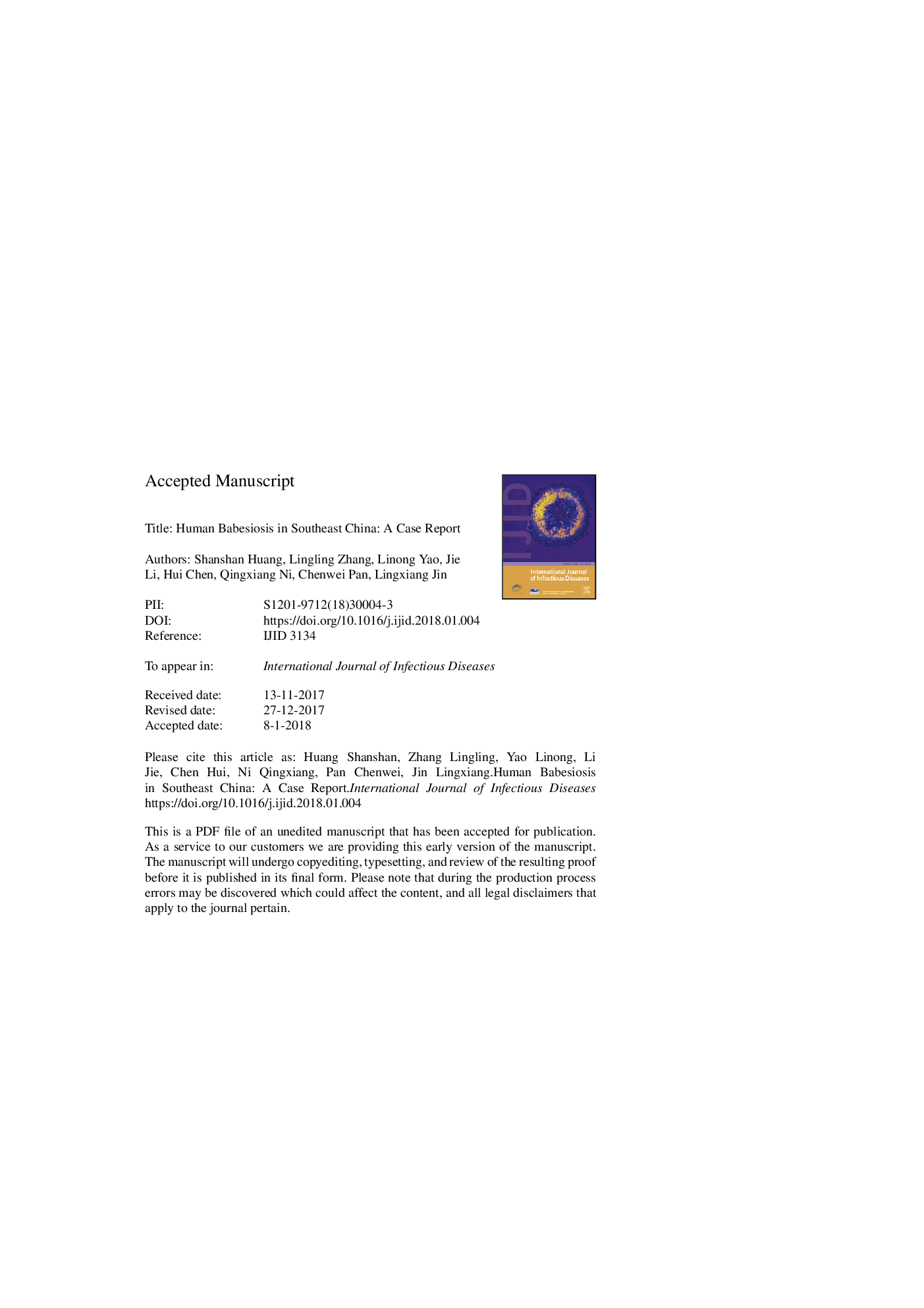| Article ID | Journal | Published Year | Pages | File Type |
|---|---|---|---|---|
| 8739062 | International Journal of Infectious Diseases | 2018 | 11 Pages |
Abstract
A 60-year-old female patient living in Southeast China presented with persistent fever, chills, night sweats, fatigue, and dizziness of 12-day duration. Blood tests showed neutropenia, thrombocytopenia, and active hemolytic anemia, with elevated C-reactive protein. Broad-spectrum antibiotics were administered for a possible diagnosis of sepsis, without any response. Malaria was initially diagnosed after visualizing intraerythrocytic ring-shaped parasites in bone marrow and blood smears. The patient resided in an area of unstable endemicity for Plasmodium falciparum. Blood samples were sent to the Centers for Disease Control and Prevention and a definitive diagnosis of human babesiosis was made using Babesia microti-specific PCR. Chloroquine phosphate and clindamycin were started and the patient became normothermic. However, due to the intolerable adverse effects of the antibiotics, intravenous azithromycin was given as an alternative. The patient recovered from fever and hemolysis, and repeated peripheral blood smears showed hemoparasite clearance. Cases of human babesiosis are rarely reported and probably under-diagnosed in China; therefore, improving our understanding of this disease as a newly emerging public health threat is imperative.
Related Topics
Life Sciences
Immunology and Microbiology
Applied Microbiology and Biotechnology
Authors
Shanshan Huang, Lingling Zhang, Linong Yao, Jie Li, Hui Chen, Qingxiang Ni, Chenwei Pan, Lingxiang Jin,
